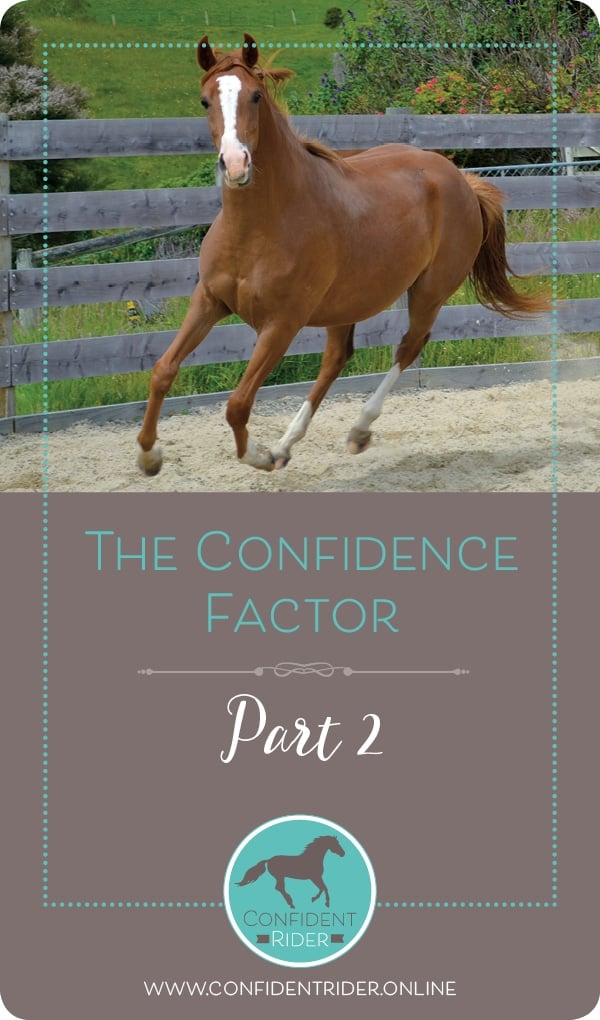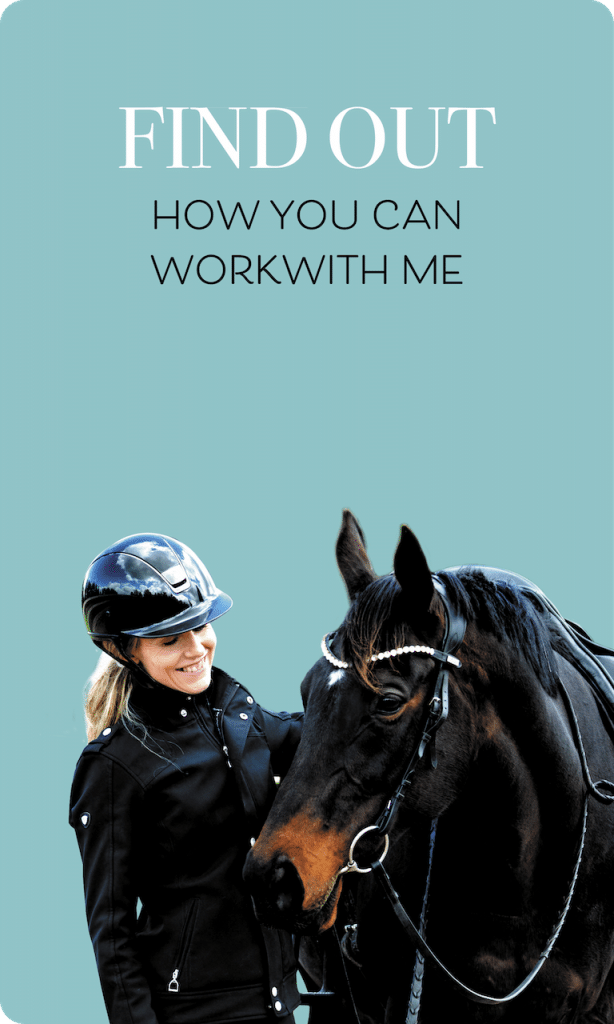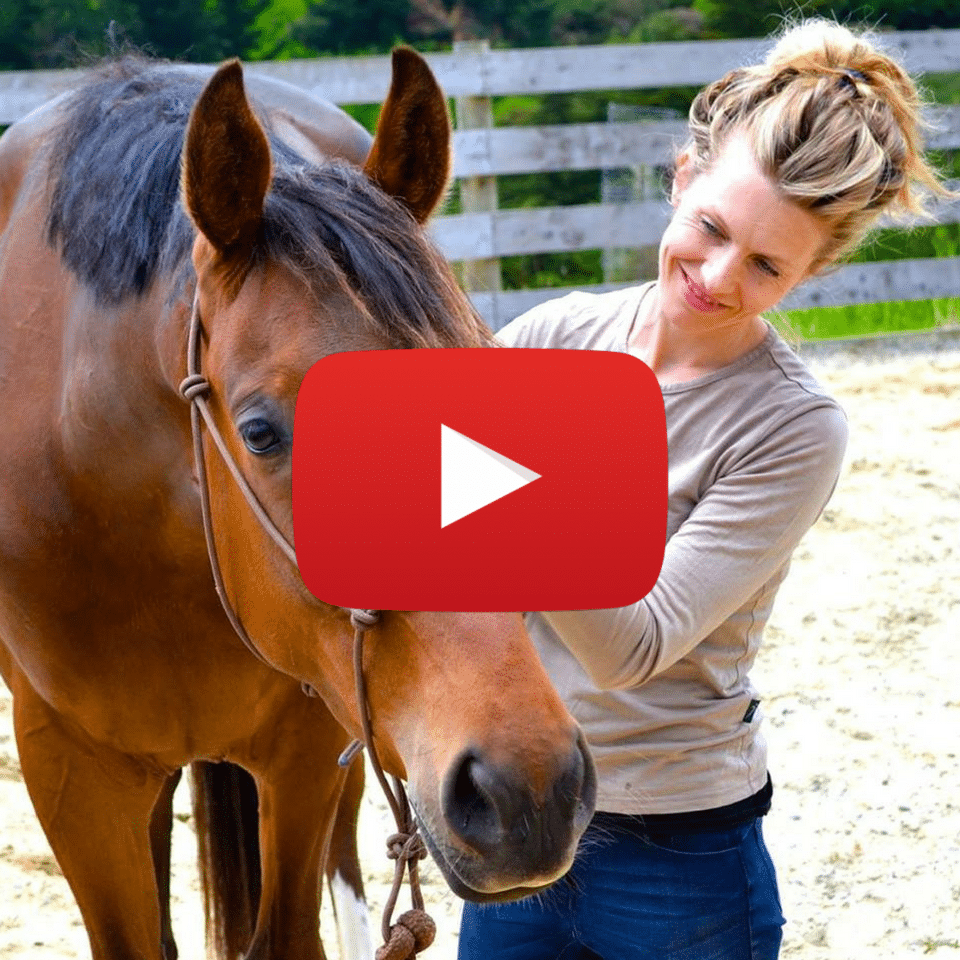Recording of Facebook Live Session

Sarah sat down in front of me, slumped over in her chair. It didn’t take an expert to see that she was feeling pretty down about herself. It’s no good, she told me. I just can’t get it together. My horse tries his heart out for me but I freeze up and let him down. I know that I am the weakest link between the two of us, but I just can’t seem to make it happen.
Talk me through it, I told her. Tell me how to feel as unconfident as you. So Sarah led me on the journey inside her mind. It’s at its worst when I am riding away from home, she said.
I start to think about who might be watching and what they are going to think of me. I worry that I am going to make a fool of myself, and that my horse might do something that I can’t manage, even though that’s never happened before. I don’t even know where it comes from, but it sucks the joy out of everything. I just can’t seem to get on top of it.
The situation that Sarah described is not an uncommon one. The details or triggers might vary from person to person, but many riders can relate to the feeling of not being able to “keep it together” when they are riding. Add to that the guilt and frustration that comes with the realization that you are your own worst enemy and we have a pretty depressing cocktail on our hands. It’s no wonder that a lack of confidence and a loss of mojo or motivation often go hand in hand.
But here’s the thing- despite how you may presently feel, or how you have felt in the past, the ability to feel confident is very much an inside job. And the big secret is this: Confidence is a skill. It’s an emotional- mental framework that arises from harnessing a few different elements that are available to all of us, the details of which I am going to share with you right now.
In the first part of this series, I discussed how getting a handle on the Three C’s is vital to you ability to cultivate confidence and work to an effective strategy moving forward. Let’s quickly revisit what those were.
They are:
- Clarity- the need to know specifically what it is you want to do and how you are going to get there
- Confidence- managing the mental-emotional framework that you are operating from
- Competence- understanding what skills you need to develop in order to be able to effectively physically manage yourself in the saddle
For the most part, competence and confidence are lumped together and seen as dependent entities, but they are actually separate pieces worthy of individual attention. Right now, we are going to look at how you can deliberately begin to work from confident mindset by understanding the underlying systems at play and how they work together.
Regardless of whether you perceive the emotion you are experiencing to be positive or negative, it arises as a result of three main factors coming into alignment. These are your focus, your self-talk and your ability to manage your physiology, or your breath and body, in a manner that supports a confident mindset.
Your ability to direct your focus towards what it is that you want and to place situation and events in an empowering context is your super power. If you are currently experiencing lack of confidence, nerves or anxiety in relation to your riding, chances are your focus is future based and your attention is based on what it is that you are looking to avoid as opposed to what it is that you want.
This focus results in a domino affect that dominates our self talk and what we view to be possible for ourselves, which in turn impacts us in a very tangible way. Not only is kryptonite for confidence, but it also signals our bodies to prepare for impending doom, triggering a release of stress hormones into our system as we quite literally prepare for physical escape from an imagined scenario. Not exactly ideal for the type of Zen want to create in the saddle!
If there is one thing that you can do to significantly impact your level of confidence it is to learn to control your focus, and by control I mean to develop the habit of turning your attention towards what it is that you want as opposed to what it is that you are trying to avoid. Here are some simple examples of what I mean:
“I don’t want to feel anxious and nervous” is a negatively geared focal point. Instead, what you are actually wanting is to feel calm and relaxed.
“I want to be able to keep it together and not freak out” can transform to “I want to be focused and on task”.
“I don’t want my horse to spook or get tense” becomes “I will focus on ensuring my horse is comfortable in his surroundings”.
Whilst they all may have the same end in mind, the associations and consequent mental imagery they invoke are radically different. Our minds are always moving towards something, so make sure what you are moving towards in your mind’s eye highlights your desired outcome and allows you to be proactive in the processes that you need to take that will maximize your chances of getting there.
The second key component in creating state is your self-talk. Our mind’s function like a computer, and in order for us to access the files that we need, we need to make sure that we are following the correct pathways. Our self-talk is the key to unlocking the files we need to get the best out of ourselves. Essentially, low quality self talk opens low quality files, and vice versa. You might have all the skills you need as a horseperson to effectively deal with what comes up, but if you aren’t operating from an positive or complementary mindset, you won’t be able to access them- at least not to the extent that is possible.
Analysing whether your self-talk is empowering or deflating will be a primary indicator of how resourceful and confident you feel in any given moment. If you are feeling anxious, chances are your inner dialogue will reflect this. I can’t do this, I am way out of my league, what if something happens, why do I even bother- sound familiar?
In order for us to feel confident, we need to manage our self-talk so it is supportive of our mission. Get curious. How do you talk to yourself when you feel confident? What would you inner dialogue be if you believed that you had what it took to make it happen? Do you have a mantra, statement or catchphrase that you could use to intercept any patterns of self- talk that are detracting from your mission and shift your focus in a different direction?
The third piece of the equation is much more tangible, and it’s for this very reason it’s often the best place to start when we are looking to change our state; our breath and the way that we are using and holding our bodies. If you are operating from an anxious or fearful framework, the effect will be instantly mirrored in our bodies. We adopt protective postures, hunching over. Our breath becomes shallow and fast, or we may find ourselves holding our breath for long periods of time. We hold tension all over, most obviously on our face and upper body.
Fortunately for us, our body and mind works as a two directional flow; whilst our thought processes may be immediately apparent in the way we hold and conduct ourselves, we can also consciously change our body and breath to affect the quality and nature of our thoughts.
With this in mind, think about what someone who is confident, focused and assured looks like in the saddle. How is their posture? Where is their gaze? How do you think your breath would be if you were confident and assured?
Now that we have this understanding, we can begin to use it as a formula of sorts to be proactive in directing our emotional state in the saddle. For example, in order for confident right now, what do you need to be focusing on? How can you manage your self-talk so that you feel positive and resourceful? And how can you adjust your body and breath to reflect confidence?
Such is their connectivity that choosing and focusing on one alone will create huge shifts in your mindset, and allow you to make positive changes towards the riding outcomes that you desire.
Being control of your state takes practice; your ability to control your focus and self-talk comes with consistently developing and inserting new patterns of behavior to replace those which are unwanted. Over time, the new pathways will become strengthened and it will become increasingly easier to consciously direct your state to match your intention.
xx Jane






2 thoughts on “The Confidence Factor ~ Managing Your Emotional State (Part 2)”
I love this it all makes so much sense and has helped me identify my inner voice and how it has affected me….. a pathway to shift and change has opened…..where orevioudly I doubted how I’d get there!!!!……a basic walk Trot test ….to get in the saddle and practice….. without the instructor is what I need to achieve…….. I’ve got this!!! Is my new mantra…… I can do this…….is another……
I will let you know what happens……
Again, thank you for the words!!!! :-) Helps me with my note taking.
Comments are closed.